To celebrate Valentine’s Day, we decided to use Dimensions to take a closer look at oxytocin, the hormone that plays such a pivotal role in our most intimate relationships. Drawing on our rich and interconnected data within Dimensions, we uncovered some fascinating facts and insights about the topic, from who’s funding the latest discoveries to who’s researching and publishing them.
But first, what is oxytocin, also referred to as the “hug hormone”, the “love hormone”, or the “cuddle chemical”? Produced mainly in the hypothalamus portion of the brain, whenever we are in close contact with a loved one or bond socially, it’s released into the blood or other parts of the brain and spinal cord via the pituitary gland. It then binds to oxytocin receptors to influence our behavior and physiology.(1)
In fact, a quick search within the nearly 1 million publications in Dimensions shows oxytocin impacts activities as diverse as how we empathize with others to giving birth. There are claims it can motivate us to work together for a common purpose. It can also make us more benevolent – a 2007 study found that those given oxytocin were 80% more generous than those given a placebo.(2) Playing with your dog can release oxytocin in your system…(3) Even better, when dogs play with us, their oxytocin levels surge too!(4)
Oxytocin and romantic love
Oxytocin plays a critical role in fanning the flames of love and studies suggest that, in some species, that role kicks in before a relationship even starts, helping them identify potential mates.(5) Once we humans have chosen a partner, a 2012 study found we already begin to record higher oxytocin levels than our single friends and this state persists for at least six months.(6) This could be because high oxytocin levels encourage us to look at partners through “rose-colored glasses” and value their gestures and actions more than we would normally.(7)
Oxytocin may also play a role in keeping us faithful… In a study of prairie voles, oxytocin signaling in their brains was found to encourage monogamy.(8) And studies in humans suggest it has a similar effect on us too.
The powerful hormone is also present in our most intimate, bedroom moments. A 2011 article looking at the orgasmic history of oxytocin(9) referenced studies that show “Oxytocin injected into the cerebrospinal fluid causes spontaneous penile erections in rats…. increases sexual receptivity and can counteract impotence ….Interestingly, at least two studies have found increases in plasma oxytocin at orgasm—in both men and women.”
Oxytocin and parenthood
It’s impossible to talk about oxytocin without touching on the role it plays in childbirth and parenting. It is the hormone responsible for causing the muscles of the uterus to contract during the labor process. In fact, scientists named it oxytocin after the Greek phrase meaning “rapid birth”.
We’ve long known that oxytocin makes us more maternal.(10) Recent studies have shown that pregnant women with higher levels of oxytocin during their first-trimester bond more strongly with their babies after they are born.(11) And it’s oxytocin that triggers the release of milk when a baby starts breastfeeding.
Exploring the practical applications of oxytocin
Oxytocin is an attractive topic for researchers. Here are a few fast facts from Dimensions we found by searching on oxytocin in the title/abstract (NOTE: all data for this article were extracted from Dimensions on 02.13.19).
Researchers
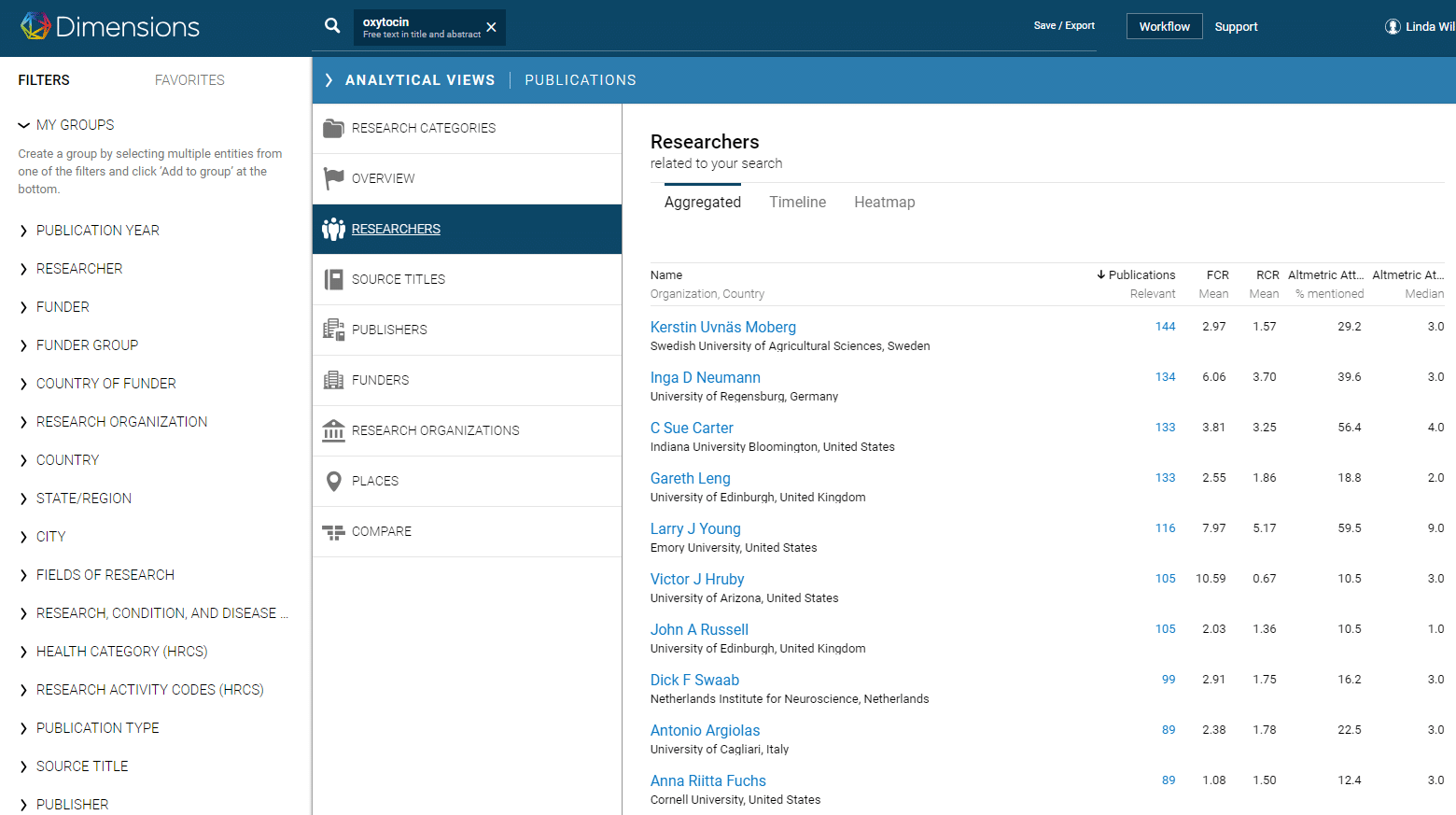
Figure 1: Listed in descending order, researchers with the highest number of oxytocin-related publications featured in Dimensions.
Seven researchers have more than 100 publications on the topic to their name. The author who tops the list, Kerstin Uvnäs Moberg, MD, PhD, is a full professor of Physiology at the University of Agriculture in Uppsala, Sweden. She has published 144 oxytocin-related publications and is widely recognized as a world authority on the hormone. Her most cited paper, “Oxytocin may mediate the benefits of positive social interaction and emotions”, was published in the journal Psychoneuroendocrinology in 1998. It looks at the involvement of oxytocin in physiological and behavioral effects induced by social interaction and has earned 565 citations to date.
Publications
Since 1928, there have been 27,277 publications with oxytocin in the title/abstract.
The most cited article is the 2005 Nature publication “Oxytocin increases trust in humans” by Kosfeld et al, with 1,900 citations.
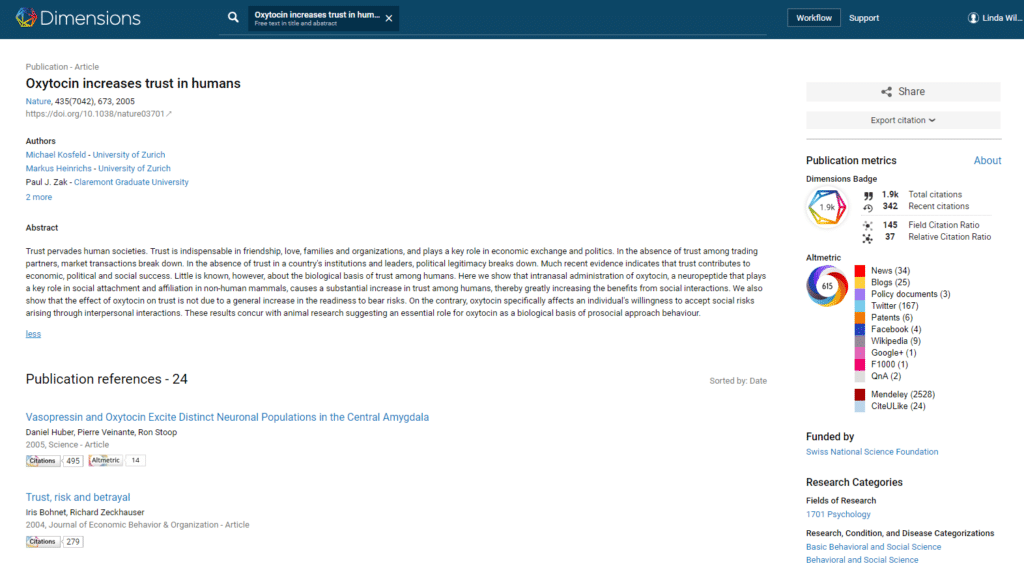
Figure 2: A screenshot of the article “Oxytocin increases trust in humans” in Dimensions.
In contrast, the article which received most online attention (as measured by Altmetrics) is the 2015 Science publication “Oxytocin-gaze positive loop and the coevolution of human-dog bonds” by Nagasawa et al, with an Altmetric score of 1,536.
Publications by year
Publications related to oxytocin have been increasing steadily in number over the past eight years – rising from 647 in 2010 to 1,275 in 2018.
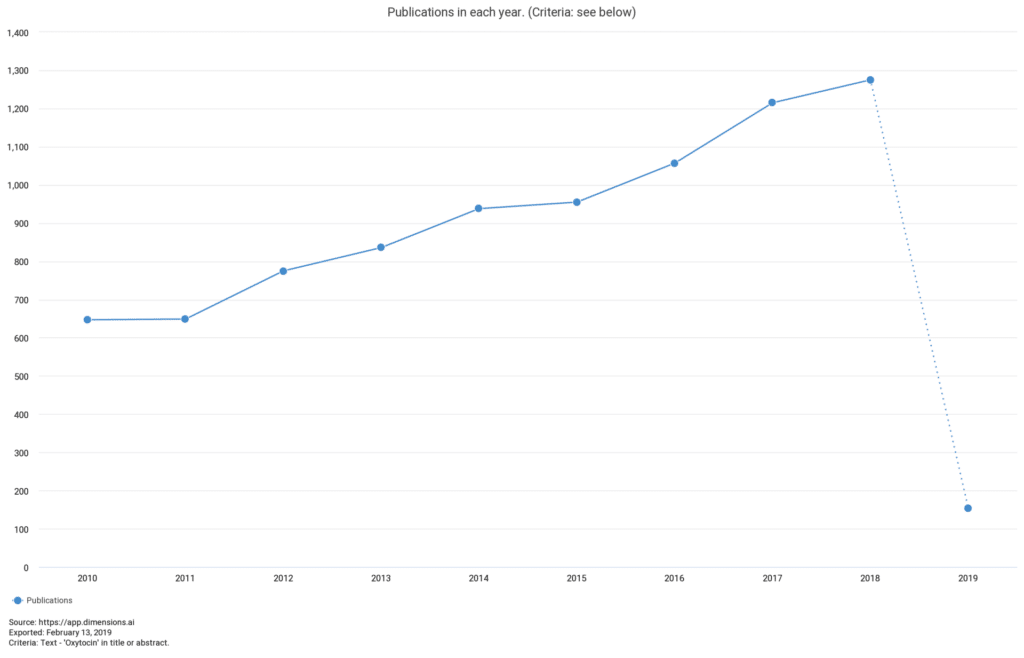
Figure 3: The number of oxytocin-related publications by year (2010-2019) in Dimensions.
Grants by year
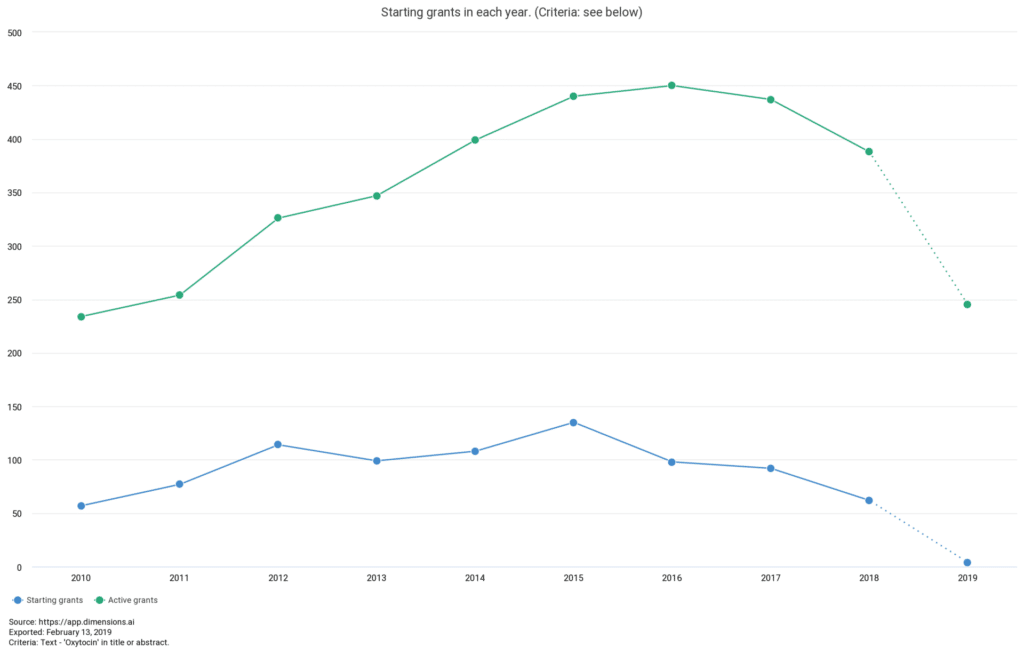
Figure 4: The number of oxytocin-related grants by year (2010-2019) in Dimensions.
While publications may have peaked in 2018, as we can see in figure 4, active grant funding hit its highest point in 2016 – an indication that we can expect that upward trend in oxytocin-related publications to continue. Since the start of 2016, 256 grants linked to the topic have been awarded, four of them this year. The Swedish Research Council was the recipient of three of those four grants and will use the total of more than 1.2 million euros to look at a range of topics from improving the treatment strategies for autism to helping map brain networks of emotional, social touch.
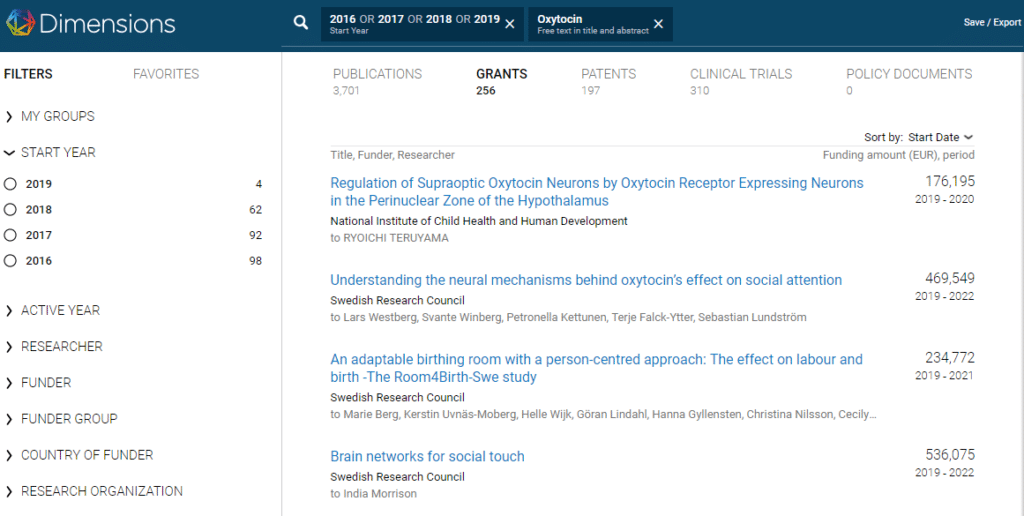
Figure 5: The four oxytocin-related grants in Dimensions awarded in 2019.
The top five funders over this period were all US-based. Mental health and alcohol abuse take the first and third positions, due to the potential use of oxytocin as a therapeutic treatment in these fields.
- National Institute of Mental Health (NIMH) EUR 15.5 M
- National Institute of Child Health and Human Development (NICHD) EUR 14.8 M
- National Institute on Drug Abuse (NIDA) EUR 5.7 M
- National Institute of Neurological Disorders and Stroke (NINDS) EUR 5.5 M
- Congressionally Directed Medical Research Programs (CDMRP) EUR 4.9 M
Patents
1,636 oxytocin-related patents have been granted since 1976. Many were filed by pharmaceutical companies, with Ferring Pharmaceuticals in the Netherlands leading the way with 151 patents. Some of Ferring’s most recent applications look at the use of oxytocin in women undergoing assisted reproductive technologies.
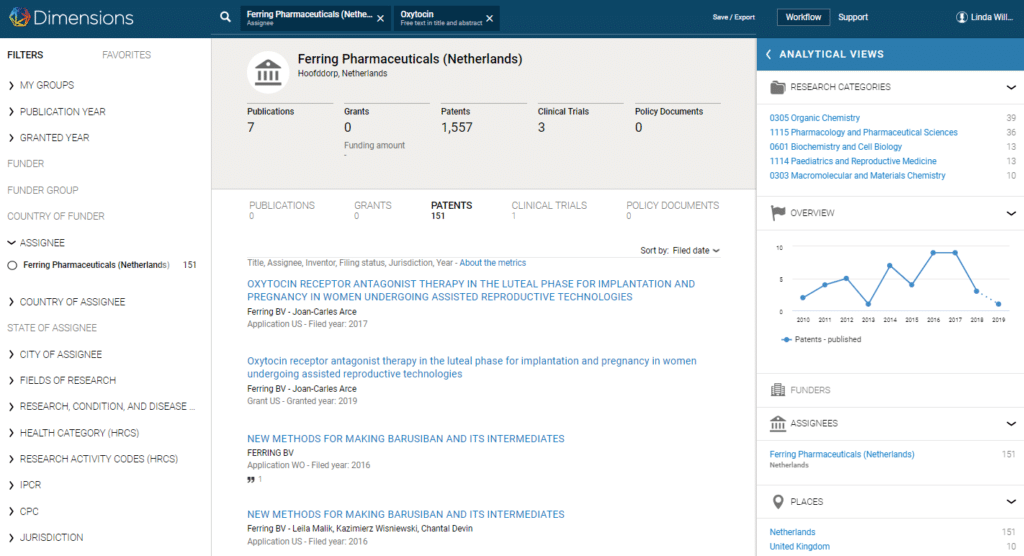
Figure 6: Some of the patents awarded to Ferring Pharmaceuticals recorded in Dimensions.
MSD (Merck Sharp and Dohme) and Pfizer in the US are number two and three on the list of patents granted, with 142 and 136, respectively. MSD’s recent patents focus on the use of oxytocin in relation to testosterone treatments in men, while Pfizer’s most recent patent application looks at its use in the treatment of male sexual dysfunction.
Patents filed by other companies look at a whole range of topics from how oxytocin can help with pain relief to treatment for psychiatric disorders and help with inducing labour. The US has filed the most patents to date (595), followed by the Netherlands (207) then the UK (177).
Oxytocin – the next steps
Oxytocin’s positive effects are many and research is continuing into how it can be incorporated into therapies for a range of conditions as diverse as eating disorders, drug and alcohol addiction, autism and erectile dysfunction. Looking at the patent and grant information, it’s clear that researchers are also still exploring the best way to deliver oxytocin treatments (e.g nasal inhalation) and the potential to enhance its performance by combining it with other chemicals.
With so much still to learn about the impact and effect of the hormone on our bodies and behavior, we can expect to see the high level of interest in it as a research topic continue for some years to come.
References
2 Oxytocin Increases Generosity in Humans
3 Dog’s gaze at its owner increases owner’s urinary oxytocin during social interaction
5 Neuroscience: The hard science of oxytocin
9 The orgasmic history of oxytocin: Love, lust, and labor
11 Evidence for a Neuroendocrinological Foundation of Human Affiliation
